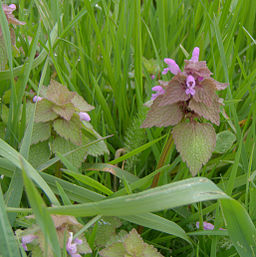Managing Cool-Weather Annual Weeds in Your Lawn
Every fall, frosty weather kills our favorite flowering annuals and sends many of our other garden plants into dormancy for the winter. But some annual weeds relish the cool temperatures of fall and winter, growing, flowering and reproducing while the weather is cool. This can make them difficult to control for several reasons.
Let’s take a quick look at what an annual plant is, whether weedy or desired. A basic definition of an annual plant is that they are programmed to complete their life cycle from germination to death in one season. Additionally, they often produce large amounts of seed to insure they leave offspring. An annual plant will not return the following year, although its seedlings may.
The cool weather annual weeds count the end of summer as the start of their season, germinating when soil temperatures begin to cool. They grow happily in the cool of winter, and die the following summer as temperatures rise and rainfall decreases.
Common cool weather weeds include broadleaf types like common chickweed, winter speedwell, and two closely related members of the Lamium family, henbit and purple deadnettle. There is also annual bluegrass, which presents its own issues, especially in lawns.
The best control for these annual weeds is to use a pre-emergent herbicide (to prevent seed germination) in late summer or early fall when soil temperatures drop to near 70F, with a second application when and if the label allows. Correct timing of the application can be tricky if you plan on fall seeding your lawn, as the pre-emergents also will keep grass seed from germinating. Waiting until it’s safe to seed after an application of pre-emergent can push your seeding into cooler weather, which will affect your grass germination rates.
If you don’t use a pre-emergent, spot treat with post-emergent herbicides. Using post-emergent herbicides in cooler weather requires careful selection, as most are not as effective at low temperatures. Look for herbicides that are labeled as working in cooler weather, though even they need temperatures of at least 45F. If you do a fall lawn seeding, you should wait until the new grass has been mowed at least three times to insure it’s strong enough to tolerate any broadleaf herbicide you use without damage.
Controlling annual bluegrass in the lawn is even more difficult. If annual bluegrass is an issue in your lawn it is critical to get pre-emergent herbicide applied in August, since broadleaf weed controls will not work on weed grasses.
If you do seed your lawn in fall, this may mean that your only option is to wait until early spring when it warms up to use chemical controls for annual winter weeds. Fortunately, all of the annual weeds have shallow and fairly weak root systems, so controlling any that do germinate by pulling them out works quite well if there are not too many.
The other factor making long term control of cool weather annual weeds difficult is the large amount of seeds they produce. Even after the parent plant dies, those seeds remain in the soil for months or years, ready to germinate and grow the following season if only given enough light and moisture. It becomes an ongoing battle for years trying to keep them under control.
Since cool weather annual weeds are difficult to control once established in your lawn, maintaining a thick, healthy lawn that keeps weed seeds from becoming established is the best way to prevent annual winter weeds from becoming a problem.





